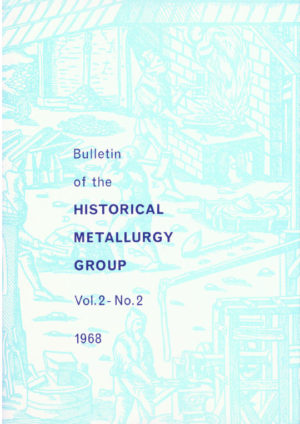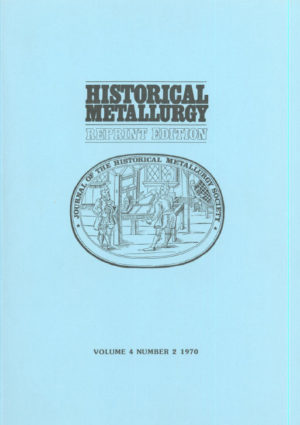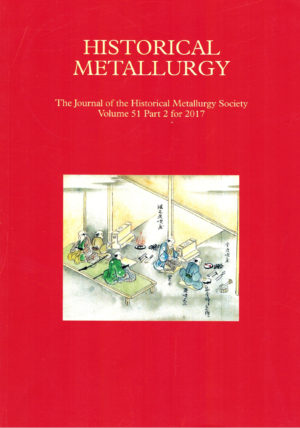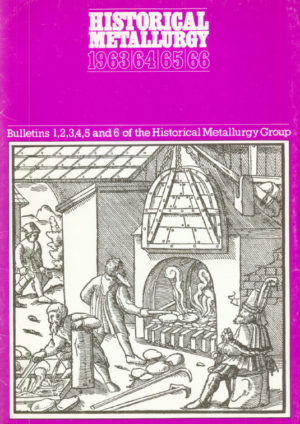Journal Contents
Slag inclusions in armour
A R Williams
Pages 69-80
The slag inclusions in samples of metal from 70 suits of armour were examined with a Scanning Electron Microscope. Different types of slag inclusion were found in different types of armour. In armour of good quality, the slag inclusions were generally all of the same type, and this type was that expected from a bloomery process. In cheaper armour, not only were the slag inclusions of different types, but more than one type of inclusion was found. An attempt is made to account for these differences in terms of the extraction processes used.
Technical studies of silver punch mark coins from Narhan (Gorakhpur U.P.), India — 600 BC-200 BC
O P Agrawal, Hari Narain and Jai Prakesh
Pages 81-88
Nineteen silver PMC coins from Narhan (Gorakhpur Uttar Pradesh), India, 600 BC-200 BC were examined to determine the fabrication technique used in their manufacture. Examination using x-ray diffraction, metallography, spectrographic analysis etc. revealed that the metal used in the coins was extracted from argentiferrous galena ore, and was worked, annealed and punched, whereas other silver PMC coins reported from different sites in India from 600 BC-900 AD were fabricated by casting and punching, without annealing.
A pioneer of experimental metallurgy: Monsieur de Reaumur
J . p. Schotsmans
Pages 89-96
At the death of Louis X I V in 1715, the regent Philippe d’Orleans requested the “Academie des Science” founded by Colbert in 1666, to prepare a “Description des Arts et des Metiers”. As an active member of the Academy, Rene Antoine Ferchault de Reaumur was asked to make a report on the manufacture of iron and steel.
Born in 1683 in a family of recent nobility, he was very much attached to its traditions and privileges. At the age of 20, however, he abandoned his study of law to devote himself to mathematics and physics. Reaumur, in spite of his aristocratic background, and for his time, had an open mind and a great scientific curiosity. He considered that only carefully conducted experiments could give reliable answers. He also believed that rules must be deduced from experiments, rather than using experiments to prove already-made propositions.
In 1722 the Academy published Reamur’s twelve Memoirs on “L’Art de Convertir le Fer Forge en Acier” (the art of converting iron into steel).
Notes on lead metallurgy in Sardinia during the Nuragic period
C. Atzeni, L . Massidda, U . Sanna and P. Virdis
Pages 97-106
Evidence of lead working in Sardinia dates back to the Chalcolithic culture of Monte Claro (-2400 BC). Lead artefacts of the Nuragic period (-1800-500 BC) are a regular occurrence on a large number of sites. Deposits rich in galena, along with the fact that these ores are readily reducible, make lead a metal of particular interest in investigations on the beginning and development of metallurgy on the Island.
The materials examined here include cramps for pottery repairs, sheets, fragments of ingots and metalworking scraps recovered from the sites of Genna Maria (late Bronze/early Iron Age), Antigori (middle Bronze Age) and Santa Barbara (late Bronze/early Iron Age). Chemical and metallographic studies did not reveal any significant differences in the characteristics of the metal in respect either of function of the find or of site. The metal is of high purity, more so than modem lead bullion and may have been produced by treating lead ores containing high proportions of PbS by the ‘charcoal hearth’ technique.
The introduction of coke iron at the Stour forges of the Knight family
Laurence Ince
Pages 107-
The Knight family’s interest in the iron industry dates as far back as the middle of the seventeenth century. However, the family’s fortune in the trade was based on the activities of Richard Knight (1659-1745). By the end of the seventeenth century he was working Morton Forge in Shropshire and also leasing the Flaxley Furnace in the Forest of Dean. The iron industry of the Enghsh midlands was at this time dominated by the activities of the Foley family. The Foley’s extensive interests were organised into a series of partnerships. However, these partnerships had become rather unwieldly and so as the Foley family rationahsed and reduced their industrial empire, other investors like the Knight family moved in to fill the vacuum. One of these groupings was called. The Ironworks in Partnership and by 1707 Richard Knight had joined this venture which operated furnaces and forges in the Forest of Dean and the Stour valley. Although by 1725 Knight had withdrawn from this partnership he continued his interest in the Stour valley by leasing forges at Cookley and Whittington. Richard Knight had also been busy elsewhere for by 1700 he was working the Bringewood Furnace and Forge in Shropshire and in 1712 he purchased the Charlcot Furnace in the same county^. The Knight interest in the Stour valley was further expanded when Richard Kjiight became a member of The Stour Partnership in 1726. This partnership operated the Hales Furnace. Knight brought into this partnership the forges at Cookley and Whittington and these provided ready outlets for the pig iron made at Hales. Richard Knight was to extend his iron making interests by becoming a partner in Cheshire ironworks and also by taking over Willey Furnace in Shropshire which had been partly operated by his brother Francis.
![[Test] The Historical Metallurgy Society](https://test.historicalmetallurgy.org/wp-content/uploads/2020/02/Logo120.png)





There are no reviews yet.